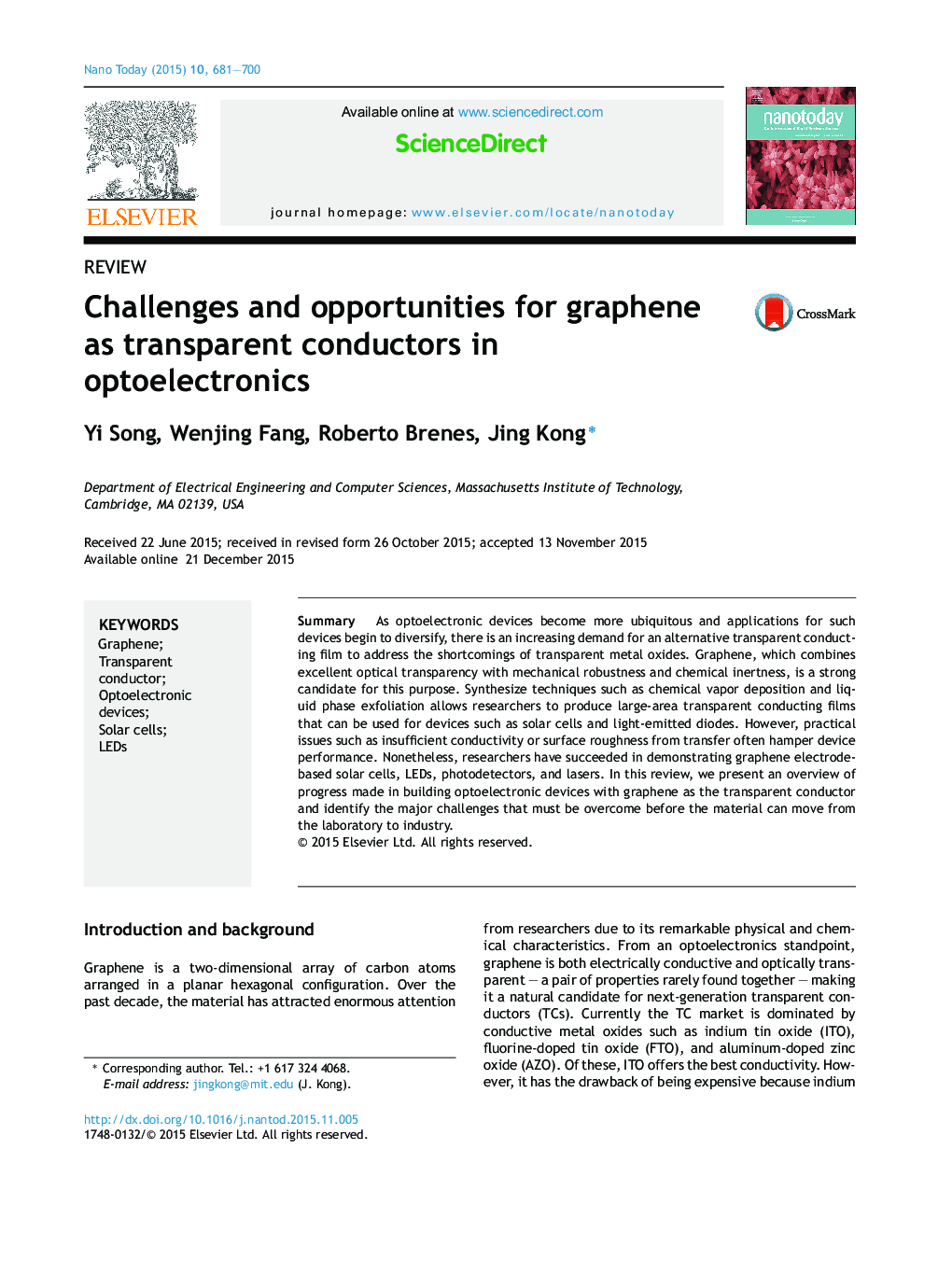| Article ID | Journal | Published Year | Pages | File Type |
|---|---|---|---|---|
| 32056 | Nano Today | 2015 | 20 Pages |
•Chemical vapor deposition and liquid phase exfoliation used synthesize graphene.•Common challenges include insufficient conductivity and residues from transfer.•Graphene used as transparent electrodes in various optoelectronic devices.•More work is necessary to demonstrate advantages of graphene over ITO.
SummaryAs optoelectronic devices become more ubiquitous and applications for such devices begin to diversify, there is an increasing demand for an alternative transparent conducting film to address the shortcomings of transparent metal oxides. Graphene, which combines excellent optical transparency with mechanical robustness and chemical inertness, is a strong candidate for this purpose. Synthesize techniques such as chemical vapor deposition and liquid phase exfoliation allows researchers to produce large-area transparent conducting films that can be used for devices such as solar cells and light-emitted diodes. However, practical issues such as insufficient conductivity or surface roughness from transfer often hamper device performance. Nonetheless, researchers have succeeded in demonstrating graphene electrode-based solar cells, LEDs, photodetectors, and lasers. In this review, we present an overview of progress made in building optoelectronic devices with graphene as the transparent conductor and identify the major challenges that must be overcome before the material can move from the laboratory to industry.
Graphical abstractFigure optionsDownload full-size imageDownload high-quality image (241 K)Download as PowerPoint slide
